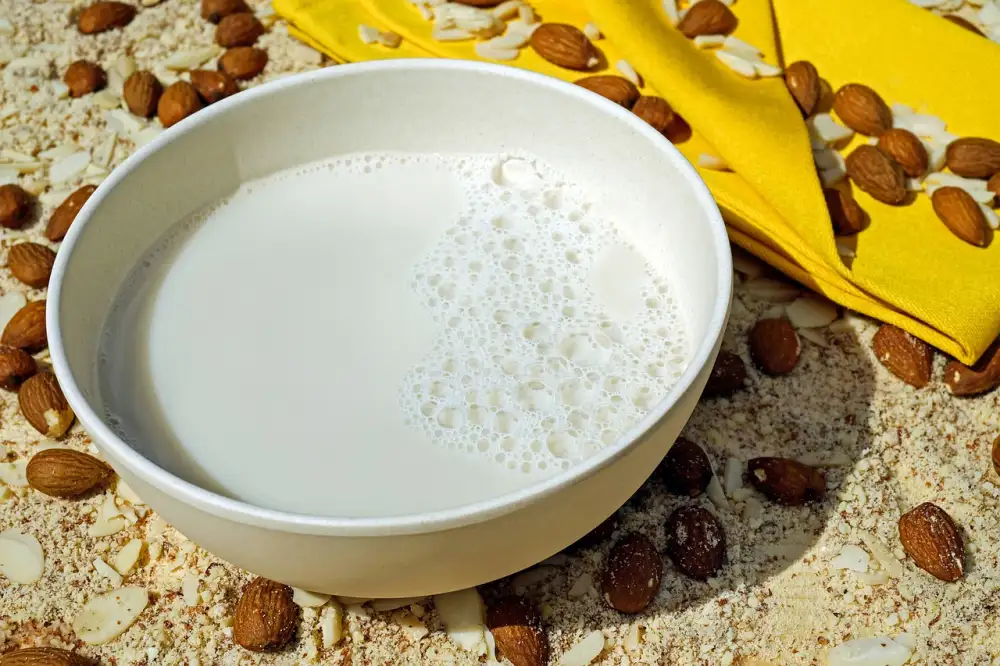Unveiling the Shelf Life of Almond Milk: Does Almond Milk Go Bad? Your Guide to Health and Freshness

Almond milk has gained popularity as a dairy-free alternative, loved for its creamy texture and nutty flavor. But like any perishable product, almond milk has a limited shelf life. Understanding how long almond milk lasts and the factors that affect its freshness is crucial for ensuring both taste and safety. In this article, we will delve into the shelf life of almond milk, signs of spoilage to look out for, and proper storage tips to maximize its freshness. So let's uncover the secrets behind keeping your almond milk fresh and delicious!
How Long Does Almond Milk Last?
How long does almond milk last? The shelf life of almond milk can vary depending on various factors. On average, unopened almond milk can last for about 7-10 days past the printed expiration date when stored properly in the refrigerator. However, it is important to note that this is just a general guideline and the freshness may vary from brand to brand. Once opened, almond milk should be consumed within 7-10 days for optimal taste and quality. It is always recommended to check the expiration date on the packaging and use your senses to determine if it is still safe to consume.
Factors Affecting the Shelf Life of Almond Milk
Several factors can affect the shelf life of almond milk. The first is the packaging. Almond milk that comes in aseptic packaging, such as cartons or bottles, tends to have a longer shelf life compared to those in open containers.
Another factor is the temperature at which almond milk is stored. It is important to keep almond milk refrigerated at all times, as higher temperatures can promote bacterial growth and spoilage.
The presence of preservatives also plays a role in determining the shelf life of almond milk. Some brands may add preservatives to extend the freshness of their product, while others may opt for preservative-free options.
Additionally, the quality of ingredients used and the manufacturing process can impact the shelf life. Almond milk made from fresh almonds and processed under strict hygiene standards is likely to have a longer shelf life compared to those made from lower-quality ingredients or with less stringent manufacturing practices.
It's worth noting that once almond milk is opened, its shelf life significantly decreases. Exposure to air and contaminants can accelerate spoilage, so it's essential to consume opened almond milk within a few days.
By understanding these factors, you can make informed choices when purchasing almond milk and ensure that you are enjoying it at its freshest and safest state.
Signs of Spoilage in Almond Milk
While almond milk can have a relatively long shelf life, it is important to be aware of the signs of spoilage. Here are some indicators that your almond milk may have gone bad:
1. Off smell: If your almond milk has a sour or unpleasant odor, it is likely spoiled. Fresh almond milk should have a mild, nutty aroma.
2. Curdling or separation: When almond milk spoils, it may start to curdle or separate. This is especially true if the almond milk has been sitting for an extended period.
3. Change in color and texture: Spoiled almond milk may appear lumpy, chunky, or slimy. It may also change color, becoming darker or developing mold.
4. Sour taste: If your almond milk tastes sour or bitter instead of its usual mild flavor, it is best to discard it.
It's crucial to note that consuming spoiled almond milk can lead to foodborne illnesses such as stomach cramps, diarrhea, and nausea. Therefore, always trust your senses and err on the side of caution when determining if your almond milk has gone bad.
Proper Storage Tips for Extending the Shelf Life of Almond Milk
Proper storage is essential for extending the shelf life of almond milk and ensuring its freshness. Here are some tips to help you keep your almond milk safe and delicious for longer:
1. Refrigeration: Almond milk should always be stored in the refrigerator, even before opening. The cold temperature helps slow down the growth of bacteria and preserves its quality.
2. Sealed Container: Once opened, transfer the almond milk into a sealed container or bottle. This will prevent contamination and maintain its freshness.
3. Use-by Date: Always check the use-by date on the packaging and consume the almond milk before it expires. Using it after this date may result in spoilage and potential health risks.
4. Avoid Temperature Fluctuations: Keep almond milk away from temperature fluctuations, such as leaving it out on the counter or near heat sources. These changes can promote bacterial growth and shorten its shelf life.
5. Avoid Cross-Contamination: Make sure to use clean utensils when pouring almond milk to avoid introducing bacteria into the container.
By following these storage tips, you can enjoy fresh and safe almond milk for an extended period, allowing you to savor its creamy goodness without worrying about spoilage or compromising your health.
In conclusion, understanding the shelf life of almond milk is crucial for enjoying this nutritious beverage at its best. While almond milk can last up to several weeks, it is important to be aware of certain factors that can affect its freshness. By storing almond milk properly in a cool and dark place, using it before the expiration date, and being vigilant for signs of spoilage, you can ensure that your almond milk remains safe and delicious to consume. So go ahead, savor the creamy goodness of almond milk knowing that you are enjoying it fresh and free from any potential risks. Cheers to a healthy and flavorful experience!
Published: 17. 12. 2023
Category: Health



